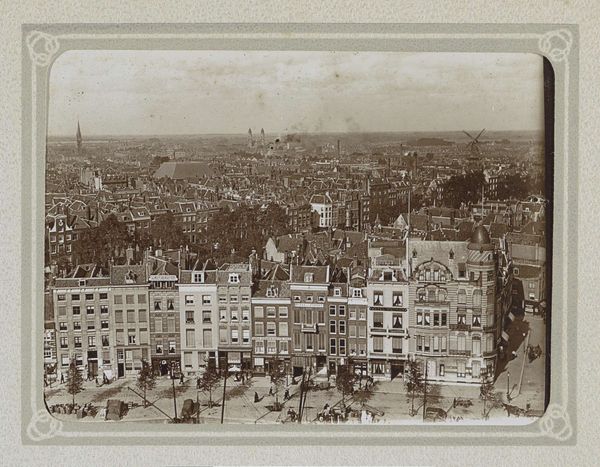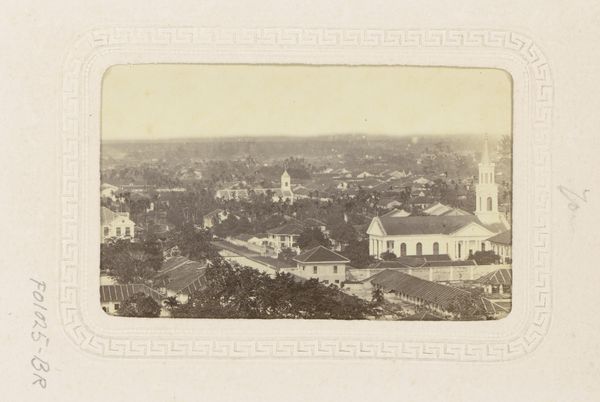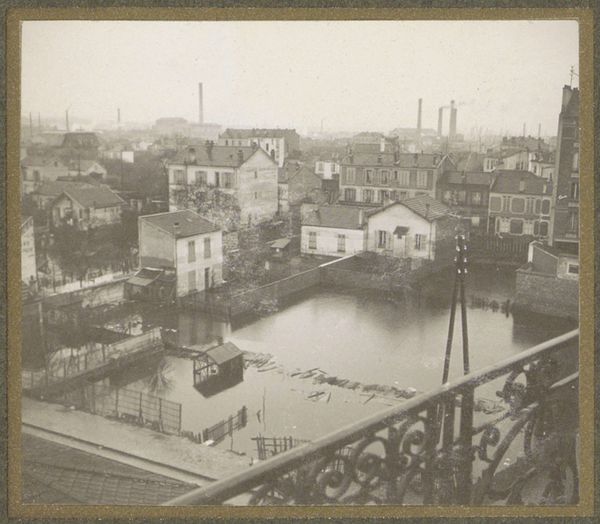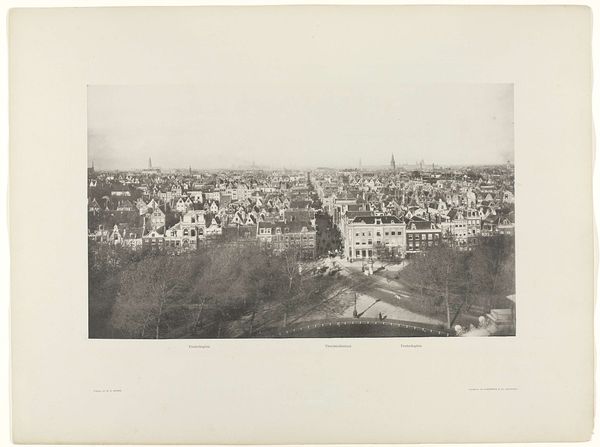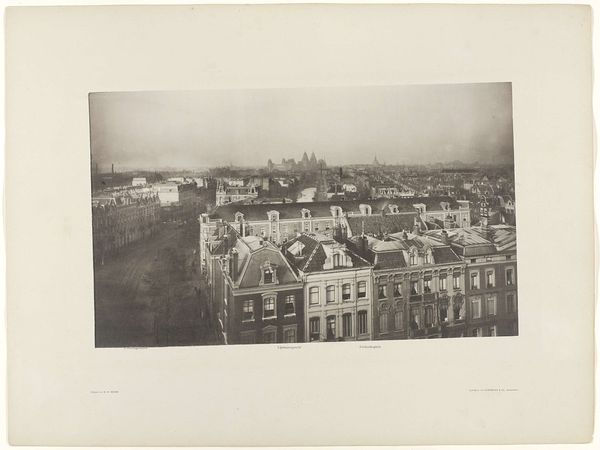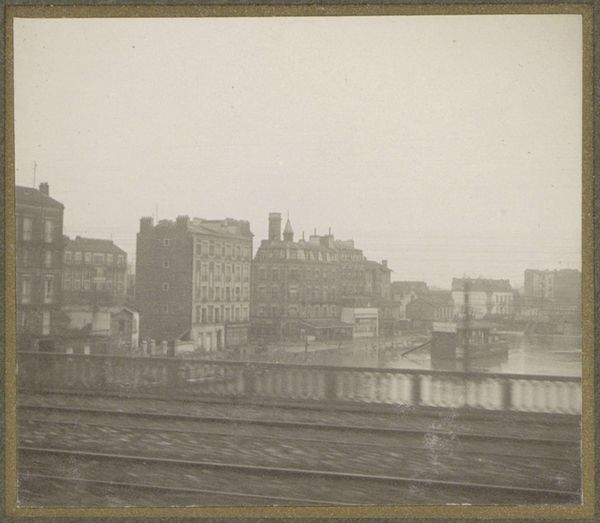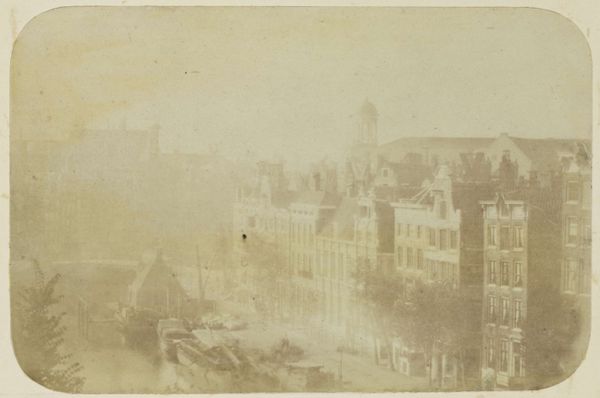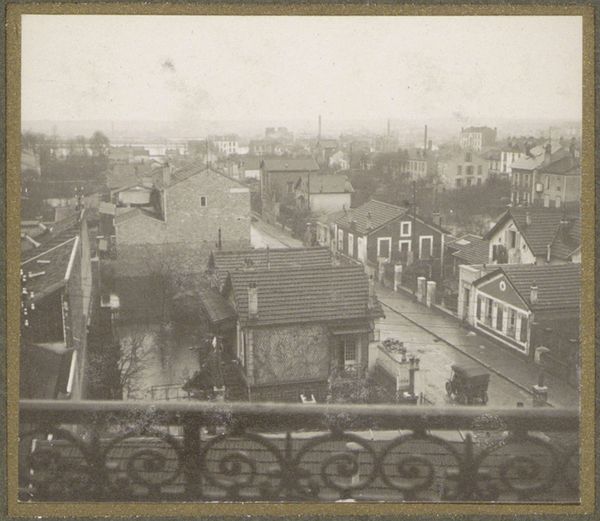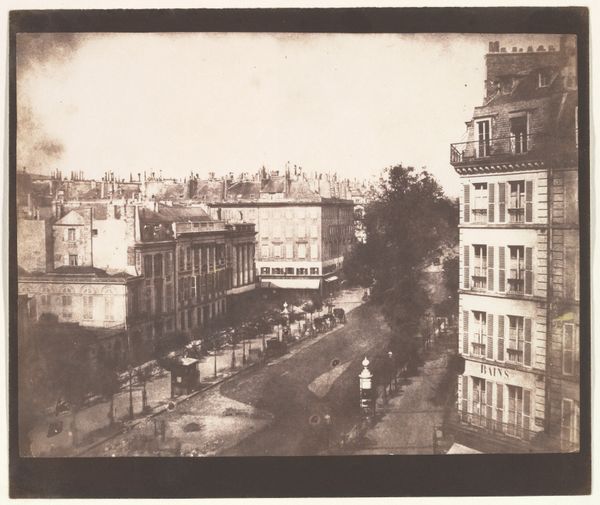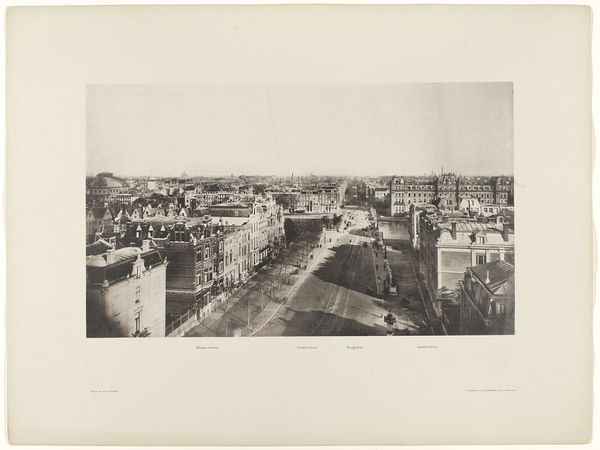
Dimensions: height 52 mm, width 59 mm
Copyright: Rijks Museum: Open Domain
Curator: This is "Ondergelopen buitenwijk van Parijs gezien vanuit een venster", or "Flooded Suburb of Paris Seen from a Window," a photograph taken by G. Dangereux sometime between 1910 and 1911. Editor: It has an apocalyptic feel. The flooded streets give this overwhelming sense of nature reclaiming urban spaces. All done in muted tones, which add to the melancholy. Curator: It speaks volumes, doesn't it? The water becomes almost allegorical, representing perhaps the unstoppable forces of change or the fragility of civilization. We can see that it has this slightly washed look – is it possible that Dangereux intentionally invoked the techniques of watercolor painting? Editor: Or perhaps Dangereux had to improvise solutions? There’s an undeniable focus here on the material conditions depicted - the height of the floodwaters compared to building construction, the evident disruption of daily life that depended on accessible roadways, that chimney looming behind and rising above everything else! It looks like the industrial dream wasn't working out so well. Curator: That’s very perceptive. This picture reminds me of how easily we forget these moments of upheaval; there’s almost a hidden premonition here about how humanity tries to control natural disasters but never quite manages. Editor: And perhaps there are some elements about control represented here in the photograph itself? We may perceive the subject as something real as an actual space, but its mediation comes through this highly manipulated photographic method and careful composition, a sort of layering and arrangement, suggesting we are very distant from whatever reality is in view. Curator: It's true, there is this haunting juxtaposition of urban aspiration and the untamed power of nature, isn't there? A reminder of the cyclical relationship between creation and destruction, order and chaos. Editor: Ultimately, what the piece tells me about is labor and materiality—whose labor went into constructing these buildings, how were the materials transported, what sustained daily life there before the flooding changed everything. Curator: A potent reminder that symbols themselves are rooted in a place, in shared histories. Editor: Definitely grounds it for me, beyond mere symbols, to what sustains everyday experience.
Comments
No comments
Be the first to comment and join the conversation on the ultimate creative platform.

